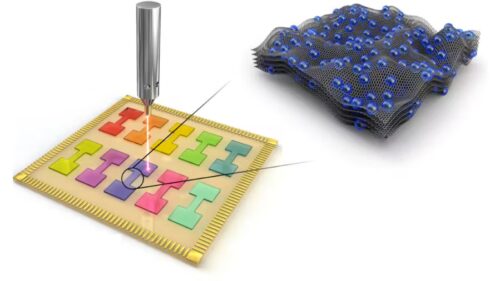The AI “electronic nose” works like a human’s sense of smell, with uses in wearables for health, pollution, and perfume detection.

Researchers at South Korea’s Daegu Gyeongbuk Institute of Science and Technology (DGIST) have created a new AI-powered “electronic nose” that mimics the human sense of smell and is compact enough for use in wearable devices.
The core innovation of the research lies in integrating multiple scent-sensitive sensors with varied properties—similar to those of the human nose—into a single unit using a one-step selective laser fabrication process. Development and commercialization efforts are underway to apply this technology in areas such as personal healthcare, environmental pollution detection, and the fragrance industry.
The researchers based their design on combinatorial coding — a feature of the human sense of smell where one odor molecule activates multiple receptors, creating a distinct pattern of neural signals that helps identify different scents. Their electronic nose mimics this process by producing unique electrical signal patterns for each smell, which are then interpreted by an AI algorithm to recognize and classify the scents.
The device is made by laser-processing graphene and adding a cerium oxide nano-catalyst to form a highly sensitive sensor array. According to the team, this method is simpler than competing techniques, can be completed in a single step, and enables the creation of ultra-thin, flexible sensor arrays. These sensors are not only suitable for wearables or skin patches but also remain effective after bending more than 30,000 times. In tests, the system accurately identified nine popular perfume and cosmetic scents with over 95% accuracy.
The study marks a key step forward in the development of electronic noses, highlighting their potential for use in established industries such as environmental monitoring, food safety, and healthcare, as well as in emerging areas like fragrance marketing. With its simplified fabrication, adjustable properties, and strong classification performance, the CeLIG (Ceria nanoparticle integrated Laser-Induced Graphene) e-nose is positioned as a promising technology for future sensor applications.









